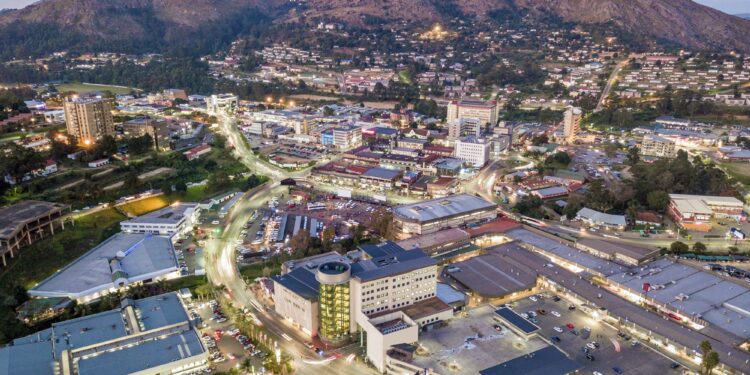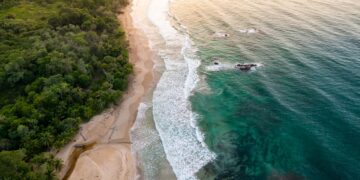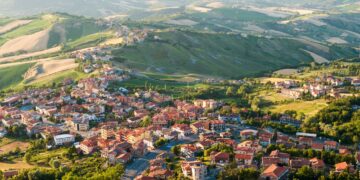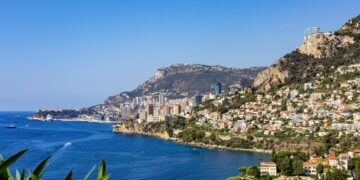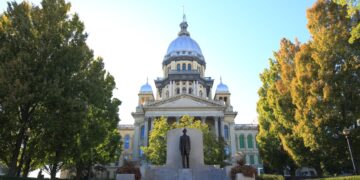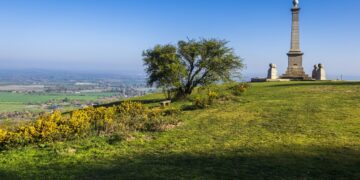Experience the allure of Swaziland, a small, landlocked monarchy in southern Africa, through the lens of popular media. Swaziland, also known as the Kingdom of Eswatini, is a hidden gem for filmmakers, authors, and TV producers, offering a unique blend of natural beauty and cultural richness. This guide will take you on a cinematic journey through Swaziland, showcasing where 4 famous films shot in Swaziland, TV shows, and books were set, and providing tips for your own journey.
Swaziland: A Filmmaker’s Paradise
Despite its small size, Swaziland has much to offer filmmakers. Its diverse landscapes range from the towering peaks of the Drakensberg Mountains to the low-lying savannah of the Lowveld. This diverse topography, combined with the country’s rich cultural heritage, has made it an appealing backdrop for a variety of films.
4 Famous Films Shot in Swaziland
While Swaziland may not be the first country that comes to mind when thinking about famous film locations, it has served as the setting for several noteworthy films. Here are four famous films shot in Swaziland:
- “Wah-Wah” (2005): This semi-autobiographical film from actor-turned-director Richard E. Grant was shot entirely in Swaziland. It offers a poignant look at the end of the British Empire in Africa through the eyes of a young boy.
- “Shepherds and Butchers” (2016): Partly filmed in Swaziland, this hard-hitting drama explores the effects of apartheid and the death penalty in South Africa.
- “Hijack Stories” (2000): This South African film, partly shot in Swaziland, explores the country’s crime epidemic through the eyes of a young man from Soweto who gets caught up in a carjacking ring.
- “Mr. Bones” (2001): This South African comedy, which includes scenes shot in Swaziland, tells the story of a white African witch doctor trying to find his long-lost tribal king.
These films showcase the natural beauty and cultural diversity of Swaziland, highlighting its appeal as a unique film location.
TV Shows Set in Swaziland
Swaziland has also served as the backdrop for several TV series. While there are no major international series set entirely in the country, Swaziland has often been included in travel and documentary series showcasing the African continent.
- “Globe Trekker” (1994-present): This popular travel series has featured Swaziland in several episodes, offering viewers an in-depth look at the country’s landscapes, wildlife, and culture.
- “Anthony Bourdain: Parts Unknown” (2013-2018): The late Anthony Bourdain visited Swaziland in an episode of this CNN series, exploring the country’s cuisine and meeting with locals to discuss the impact of HIV/AIDS on the community.
These shows offer a glimpse into Swaziland’s unique charm, from its stunning landscapes to its rich cultural traditions.
Famous Books Set in Swaziland: Classic and Contemporary
Swaziland’s rich history and culture have also found their way into literature. Here are a few classic and contemporary books set in Swaziland:
Classic:
- “Venture to the Interior” by Laurens van der Post: This travelogue by the famous South African writer explores the landscapes of Swaziland and Lesotho, offering insightful reflections on the nature of Africa and its colonial history.
Contemporary:
- “When the Ground is Hard” by Malla Nunn: Set in Swaziland during the apartheid era, this young adult novel tells the story of two girls who form an unlikely friendship at a rigid boarding school.
- “The Lost Kingdoms of Africa” by Jeffrey Tayler: This travel memoir includes a chapter on Swaziland, where the author explores the country’s history, culture, and political struggles.
These books offer readers a deeper understanding of Swaziland’s complex history and vibrant culture.
Exploring Swaziland Filming Locations – Where to Go
Experience the cinematic charm of Swaziland first-hand by visiting some of its famous filming locations. Here are a few places to include in your itinerary:
- Mlilwane Wildlife Sanctuary: Featured in several films and TV shows, this nature reserve offers beautiful landscapes and abundant wildlife.
- Hlane Royal National Park: The largest national park in Swaziland, Hlane has served as the backdrop for several wildlife documentaries.
- Manzini: The country’s most populous city, Manzini has been featured in several films and TV shows, offering a glimpse of urban life in Swaziland.
- Mbabane: The capital city of Swaziland, Mbabane’s colonial architecture and scenic views have made it a popular filming location.
Visiting these locations offers a unique way to explore Swaziland, allowing you to walk in the footsteps of filmmakers and experience the country’s cinematic allure first-hand.
Where to Sleep in Swaziland: Cheap and Luxury
Whether you prefer the luxury of a five-star hotel or the affordability of a backpacker’s lodge, Swaziland has accommodations to suit every travel style. Here are some options for both luxury and budget accommodations:
Luxury:
- Royal Swazi Spa: Located in the Ezulwini Valley, this luxury resort offers a spa, golf course, and casino.
- Summerfield Botanical Garden: This luxury resort in Manzini is known for its beautiful gardens and gourmet restaurant.
Budget:
- Sondzela Backpackers: Located within Mlilwane Wildlife Sanctuary, this budget-friendly accommodation offers dormitories and private rooms.
- Ezulwini Valley: Home to several budget-friendly lodges and guesthouses, this valley is conveniently located near many of the country’s main attractions.
These accommodations offer a comfortable base from which to explore Swaziland’s cinematic landscapes.
Where to Eat in Swaziland: Budget and Luxury
Swaziland offers a variety of dining options, from fine dining to traditional Swazi cuisine. Here are a few places to eat, whether you’re on a budget or looking for a luxury dining experience:
Budget:
- Malandela’s Restaurant: Located near Manzini, this restaurant offers affordable Swazi cuisine in a relaxed setting.
- House on Fire: This unique venue in the Malkerns Valley is a restaurant, art gallery, and music venue in one, offering affordable meals and a vibrant atmosphere.
Luxury:
- The Calabash: Located at the Royal Swazi Spa, this fine dining restaurant offers a gourmet menu and an extensive wine list.
- Foresters Arms: This country hotel in Mhlambanyatsi offers a fine dining experience in a colonial setting.
Whether you’re a foodie on a budget or a gourmet connoisseur, Swaziland offers a range of dining experiences to suit your palate.
Detailed Itinerary: Day by Day
Make the most of your trip to Swaziland with this five-day itinerary, exploring famous filming locations and immersing yourself in the country’s culture and history.
Day 1: Mbabane
Start your journey in the capital city of Mbabane. Explore its colonial architecture, visit the Mbabane Market for local crafts, and dine at one of the city’s many restaurants.
Day 2: Mlilwane Wildlife Sanctuary
Spend the day exploring Mlilwane Wildlife Sanctuary, a popular filming location. Enjoy a safari, go hiking or horseback riding, and stay overnight at Sondzela Backpackers within the sanctuary.
Day 3: Manzini
Head to Manzini, the country’s most populous city. Visit the Manzini Market, one of the largest open-air markets in Africa, and explore the city’s nightlife.
Day 4: Hlane Royal National Park
Spend the day at Hlane Royal National Park, the largest national park in Swaziland. Enjoy a safari and spot lions, elephants, and other wildlife.
Day 5: Ezulwini Valley
End your journey in the scenic Ezulwini Valley. Visit the Royal Swazi Spa for a day of relaxation, explore the local craft markets, and enjoy a fine dining experience at the Calabash.
With this itinerary, you’ll get a taste of Swaziland’s cinematic charm, diverse landscapes, and rich culture.
Cryptid Legends and Curiosities
Beyond its cinematic allure, Swaziland is also home to several legends and curiosities. One of the most famous is the “Tikoloshe”, a supernatural creature in Zulu mythology. According to legend, a Tikoloshe is a dwarf-like water sprite that can become invisible by swallowing a pebble. Though not cryptid in the traditional sense, the Tikoloshe is a captivating part of Swazi folklore.
Hidden Gems in Swaziland
In addition to its famous filming locations, Swaziland is home to several lesser-known attractions that are worth a visit:
- Nisela Safari Lodge: This lodge in the south of Swaziland offers game drives, bird watching, and a reptile park.
- Ngwenya Glass: Visit this workshop to see local artisans blowing glass and creating beautiful products from recycled glass.
- Mantenga Cultural Village: This living museum offers a glimpse into traditional Swazi life, including dance performances and guided tours of traditional huts.
These hidden gems offer unique experiences beyond the typical tourist trail, allowing you to explore the real Swaziland.
What to Pack for a Trip to Swaziland
When packing for your trip to Swaziland, consider the following essentials:
- Comfortable walking shoes: You’ll be doing a lot of walking, especially if you’re planning on going on safaris or hiking in the mountains.
- Lightweight clothing: Swaziland has a warm climate, so lightweight, breathable clothing is a must. Don’t forget a hat and sunglasses for sun protection.
- Warm layers: While the days can be hot, nights can be cool, especially in the mountains. Bring a warm sweater or jacket for the evenings.
- Rain gear: Be prepared for sudden downpours, especially during the rainy season (November to March).
- Camera: You’ll want to capture the beautiful landscapes and wildlife of Swaziland.
- Travel documents: Don’t forget your passport, travel insurance documents, and any necessary visas.
With these items in your suitcase, you’ll be well-prepared for your cinematic journey through Swaziland.
Transportation Tips: Getting Around Swaziland
Swaziland is a small country, making it relatively easy to get around. Here are a few transportation tips:
- Car rental: Renting a car is the most convenient way to get around Swaziland, as public transportation is limited and the country’s attractions are spread out.
- Taxis: Taxis are available in the major cities and can be a convenient way to get around. However, they can be more expensive than renting a car.
- Public buses: Public buses operate between the major cities, but they can be crowded and unreliable.
- Walking: Many of Swaziland’s attractions are located in scenic areas that are perfect for hiking.
Regardless of how you choose to get around, you’ll be rewarded with stunning views and diverse landscapes.
Travel Documents Needed for Visiting Swaziland
Before you embark on your cinematic journey through Swaziland, make sure you have the necessary travel documents:
- Passport: Your passport should be valid for at least six months beyond your planned departure date.
- Visa: Depending on your nationality, you may need a visa to enter Swaziland. Check with the Swaziland embassy or consulate in your country for information.
- Travel insurance: It’s recommended to have travel insurance that covers medical emergencies, trip cancellation, and lost luggage.
- International Driving Permit (IDP): If you plan to rent a car, you’ll need an IDP along with your valid driver’s license.
Ensure you have these documents in order to ensure a smooth journey to Swaziland.
Conclusion: Lights, Camera, Swaziland!
From the rolling landscapes of Mlilwane Wildlife Sanctuary to the bustling city of Manzini, Swaziland offers a cinematic journey like no other. Whether you’re a film buff, a TV series enthusiast, a book lover, or simply a traveler in search of unique experiences, this guide provides a comprehensive overview of Swaziland’s cinematic landscape. So embark on a journey through 4 famous films shot in Swaziland, TV shows, books, and discover the hidden gems that make this country a filmmaker’s dream. Happy travels!


